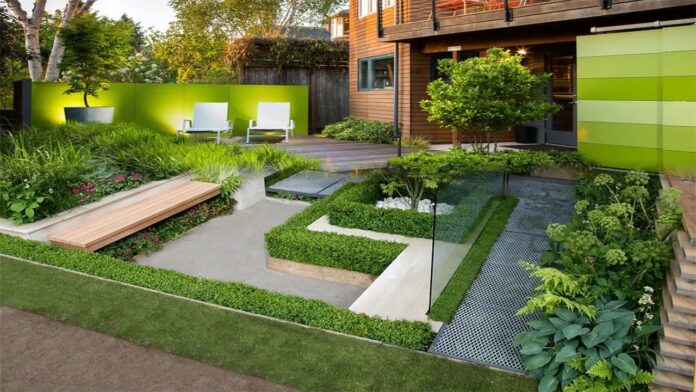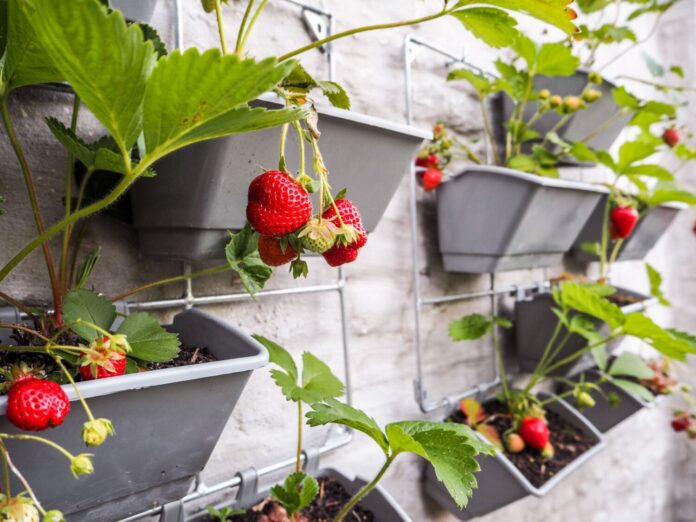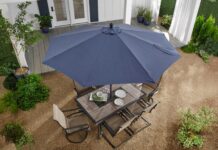It’s finally springtime, the perfect time to breathe new life into your garden. Whether you have a sprawling back garden or a cozy urban oasis, the arrival of spring invites you to reimagine your outdoor space and transform it entirely.
This season, why not elevate your garden design with fresh ideas that marry beauty, functionality, and sustainability?
From vibrant plantings to innovative features, we’ve collected six trendy garden design ideas to inspire your springtime projects. Let’s take a look.
1. Composite Fencing ─ The Modern Garden Essential
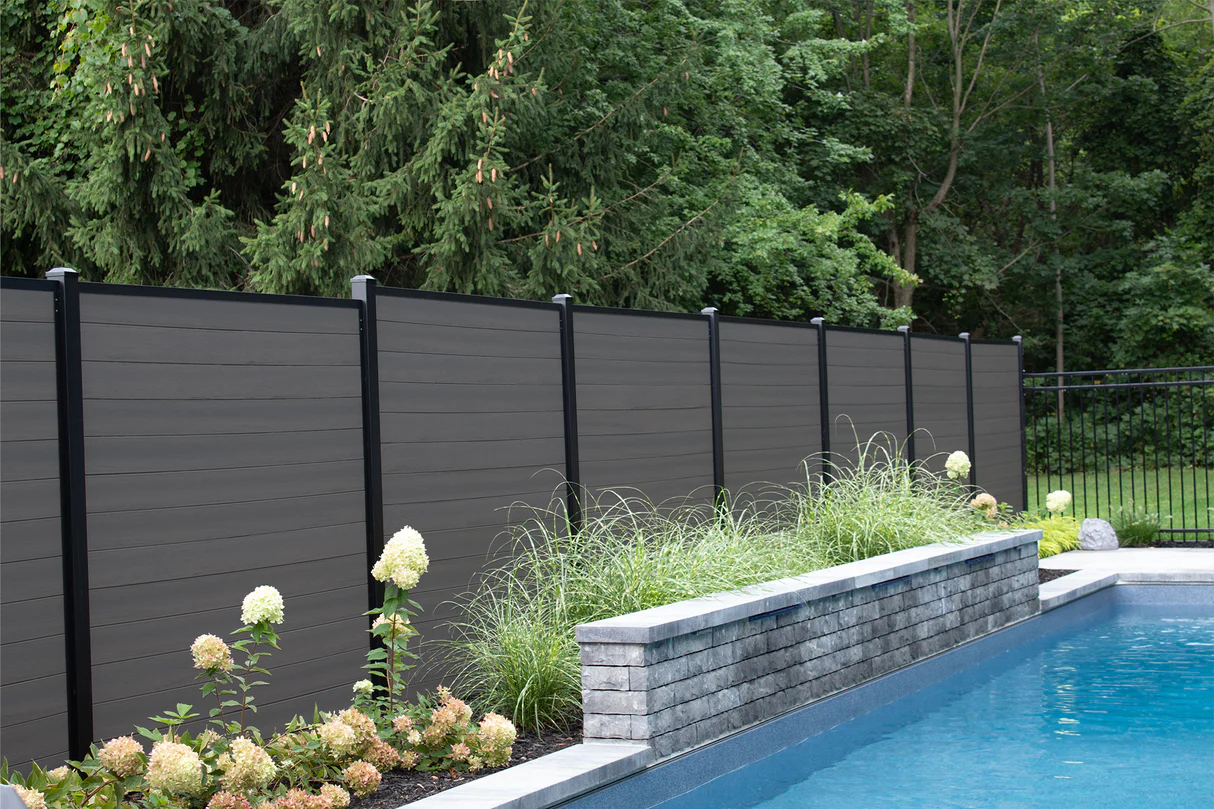
Composite fencing has rapidly gained popularity in recent years, and for good reason. This innovative material combines the natural look of wood with the durability of recycled plastic, resulting in a low-maintenance fencing solution that’s perfect for the modern garden.
Unlike traditional wood fences, composite fencing is resistant to rot, warping, and insect damage, making it ideal for withstanding the elements all year round.
But composite fencing isn’t just practical—it’s also incredibly versatile from a design perspective. Available in a variety of colors, textures, and styles, composite fencing can complement any aesthetic, whether you prefer a sleek contemporary look or a rustic vibe.
Certain composite fencing suppliers even allow you the ability to retrofit pre-existing timber and concrete posts with special inserts, helping you to make the most out of what you already have. With composite fencing, the possibilities are endless.
2. Making A Firepit
Creating a firepit in your garden can be a fantastic design addition, fostering a cosy ambiance and providing a focal point for gatherings. Begin by selecting an appropriate location, considering factors like safety, proximity to flammable materials, and ease of access. Clear the chosen area of any debris, vegetation, or overhanging branches to create a safe zone.
Next, decide on the size and shape of your firepit. Popular options include circular, square, or rectangular designs, depending on your preference and available space. You can use various materials such as bricks, pavers, or stones to construct the firepit’s perimeter, ensuring stability and heat resistance.
If building on top of a service, make sure it is appropriately fire rated. Patio slabs and composite decking are fantastic choices when making a firepit.
Dig a shallow pit within the perimeter, ensuring it’s deep enough to contain the fire safely. Consider adding a layer of sand or gravel at the bottom for drainage and insulation.
Assemble the chosen materials around the pit, securing them in place with mortar or a suitable adhesive. Once the construction is complete, decorate the surrounding area with seating, such as benches, chairs, or stone blocks, arranged to encourage social interaction and comfort. Enhance the ambiance with string lights, lanterns, or torches for evening gatherings.
Finally, remember to follow safety precautions, such as keeping a fire extinguisher nearby and always monitoring the fire, to enjoy your garden firepit responsibly.
3. Vertical Gardening ─ Maximizing Space and Visual Appeal
Vertical gardening is a trend that continues to gain momentum, especially in built up urban areas where outdoor space is limited. This innovative approach allows you to make the most of vertical surfaces, such as walls, fences, and trellises, and transform them into lush greenery-filled canvases.
Not only does vertical gardening help maximize space, but it also adds visual interest and texture to your garden design.
When incorporating vertical gardening into your springtime garden, consider installing trellises or pergolas adorned with climbing plants like ivy, jasmine, or climbing roses. These plants not only soften the look of the fence but also provide habitats for pollinators and other beneficial wildlife.
For smaller spaces, vertical garden systems with built-in planters offer a convenient and stylish solution, allowing you to create a verdant oasis even in the tightest of spaces.
4. Native Plantings ─ Embracing Biodiversity and Sustainability
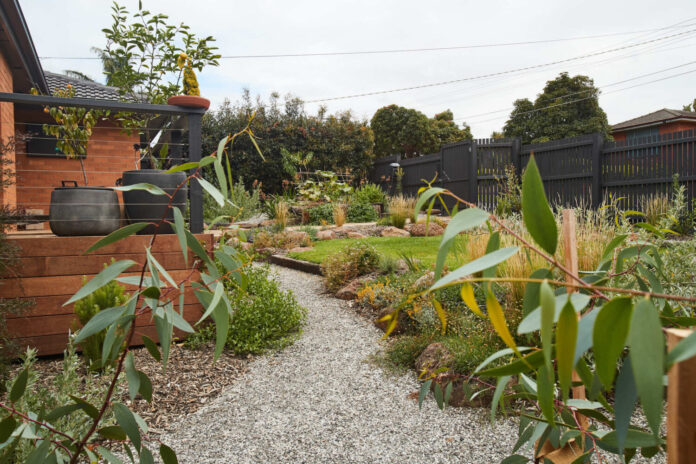
Incorporating native plants into your garden design isn’t just a trend—it’s a commitment to biodiversity and sustainability. Native plants are adapted to the local climate and soil conditions, making them more resilient and easier to care for than non-native species.
Additionally, native plants provide essential habitat and food sources for local wildlife, including birds, butterflies, and bees.
This spring, consider revamping your garden with a palette of native plants that not only thrive in your region but also contribute to the overall health of your local ecosystem. From colorful wildflowers to hardy shrubs and grasses, native plantings can add texture, colour, and fragrance to your garden while supporting local biodiversity.
To create a cohesive look, border your garden beds with low-maintenance composite fencing, which provides a clean and contemporary backdrop for your native plantings.
5. Outdoor Living Spaces ─ Creating Zones for Relaxation and Entertaining
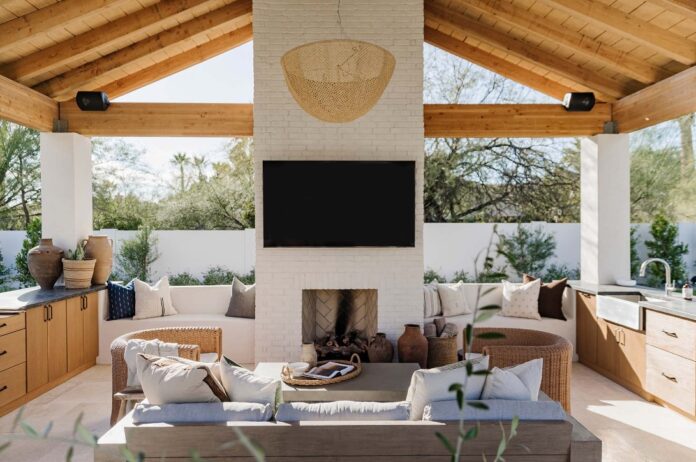
As our lives increasingly move outdoors, creating functional and inviting outdoor living spaces has become a priority for many homeowners. This spring, consider designing your garden with distinct zones for relaxation, entertaining, and dining, allowing you to make the most of your outdoor space year-round.
Composite fencing can play a crucial role in defining these outdoor living spaces, providing privacy, security, and visual interest. Use fencing to create separate areas for lounging, dining, and gardening, incorporating features like pergolas, arbors, and outdoor furniture to enhance each zone’s functionality and aesthetic appeal.
To create a seamless transition between indoor and outdoor spaces, opt for composite fencing in a color that complements your home’s exterior, tying the entire design together.
6. Sustainable Landscaping Practices ─ Minimizing Environmental Impact
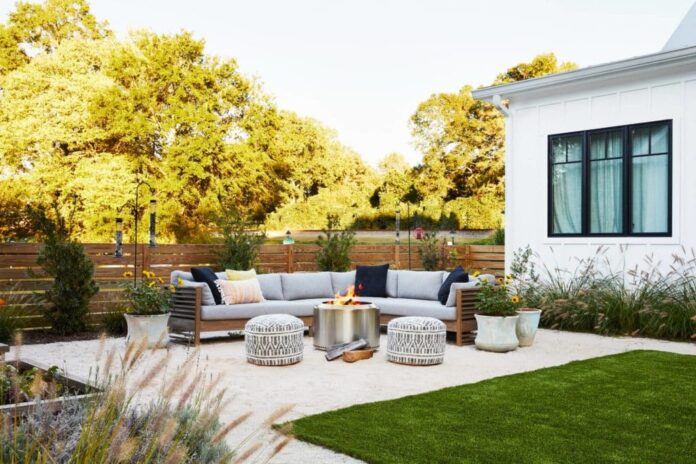
In an era of increasing environmental awareness, sustainable landscaping practices have become more important than ever. This spring, take steps to minimize your garden’s environmental impact by incorporating eco-friendly materials, conserving water, and promoting soil health.
Composite fencing is an excellent choice for environmentally conscious gardeners, as it’s made from recycled materials and requires minimal maintenance compared to traditional wood fencing.
Additionally, consider installing rainwater harvesting systems to collect runoff from your roof for irrigation purposes, and choose drought-tolerant native plants that require less water to thrive. By adopting sustainable landscaping practices, you can create a beautiful and environmentally friendly garden that you can enjoy for years to come.
In conclusion, spring is the perfect time to breathe new life into your garden with fresh design ideas that embrace beauty, functionality, and sustainability. From composite fencing to vertical gardening, native plantings, outdoor living spaces, firepits, and sustainable landscaping practices, there are countless ways to elevate your outdoor space this season.
So roll up your sleeves, grab your gardening tools, and get ready to transform your garden into a vibrant oasis that you’ll love spending time in all spring and beyond.

